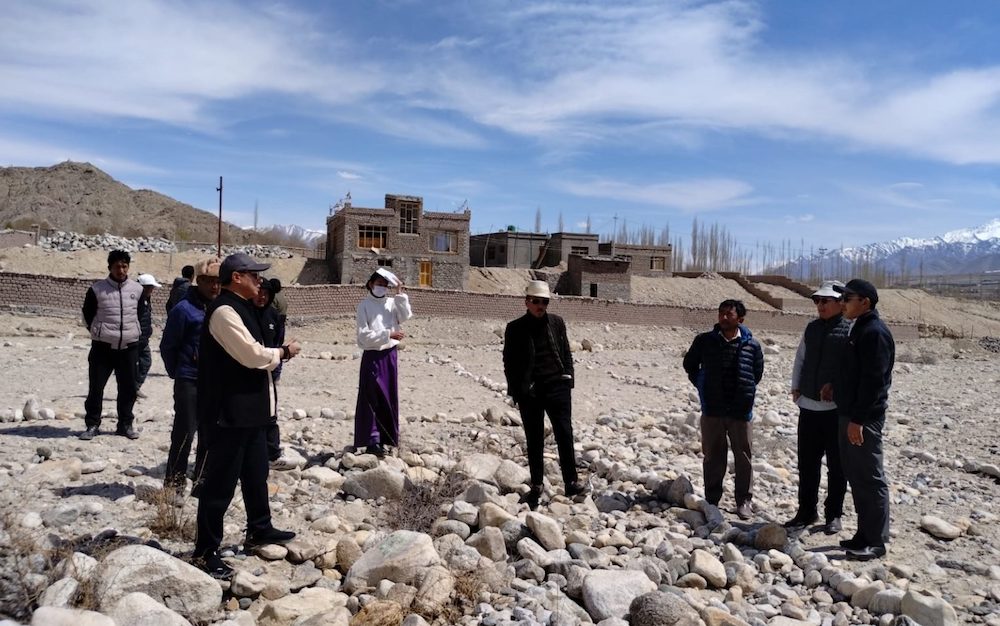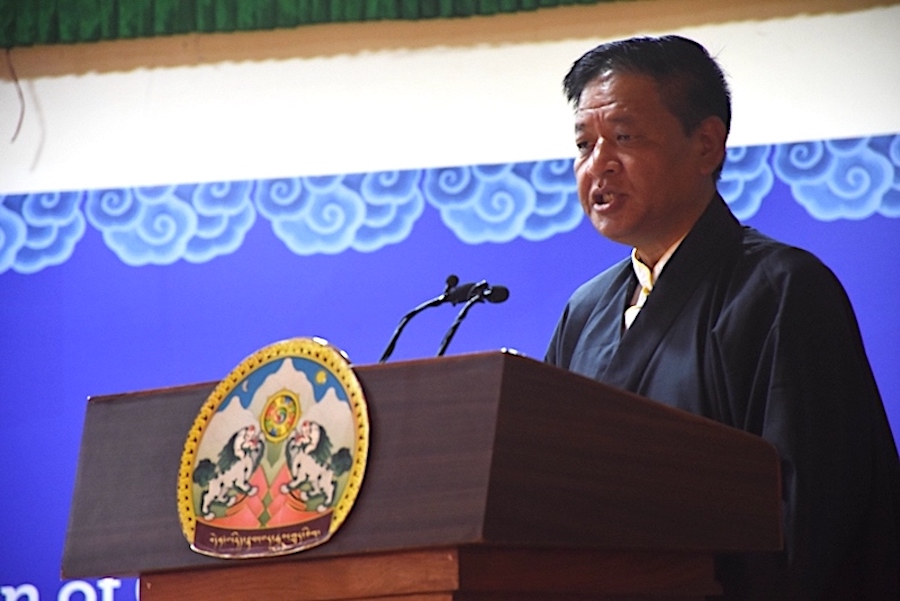The authorities in Lhasa are planning to demolish the larger part of the remaining village of Shol at the foot of the Potala Palace, former winter residence of the Dalai Lama, to make way for a square and a museum. The World Heritage Committee, which monitors the implementation of the UNESCO Convention concerning the Protection of the World Cultural and Natural Heritage, has expressed concern regarding its demolition. Residents and traders in Shol village have been moved out of the cluster of Tibetan homes at the foot of the palace to an area known as ‘new Shol’ behind the Potala, with newer housing.
The reports come amid growing reports of dramatic changes in the social fabric of the
Lhasa over the past year – the number of Chinese-owned shops and stalls in the Tibetan heart of the city, the Barkor, has dramatically increased, and there are reports of more Chinese families living in traditional Tibetan areas in the heart of the old city.
The area known as ‘outer Shol’, representing the buildings outside the Shol fortification walls, was demolished to create the Potala Square in 1994-95. The remaining area was until recently a popular place for tourists leaving the Potala to buy souvenirs from small shops and stalls run by Tibetans, as well as an interesting traditional housing area. It is known still as a place of living Tibetan history; the architects Amund Sinding Larsen and Knud Larsen describe it as follows in The Lhasa Atlas (Serindia, 2001): ‘A village of its own…with traditional buildings protected within a high wall.’ Many Lhasa residents were very distressed by the earlier destruction of the main part of Shol in the mid-1990s, and some officials are known to have expressed their formal concern at that time within the government about the development.
A session of the World Heritage Committee, held in Paris from 30 June – 5 July 2003, urged the authorities to review their urban development plan of Lhasa. There was widespread international concern last year following the relocation of residents and subsequent demolition of a traditionally-built building complex on the corner of Dekyi Shar Lam (Chinese: Beijing Dong Lu) and Mentsikhang Lam close to the Jokhang, an area that falls within the Lingkor, the traditional pilgrimage circuit around the Tibetan capital. The World Heritage Committee stated in its report last month: ‘Demolition should be stopped, particularly in the Shol area. If in exceptional circumstances, demolition is necessary, any necessary replacement buildings should be in keeping with the historic character of the area.’ The Committee also requested UNESCO (United Nations Educational, Scientific and Cultural Organization) and ICOMOS (International Council on Monuments and Sites) to assist the Chinese authorities in ‘assessing and updating the comprehensive conservation plan to make the most appropriate use of the Shol area, which forms part of the administrative section of the Potala Palace so as to maintain the traditional urban tissue of the area while changing the use of the traditional buildings’. The Committee’s report followed the visits of two expert missions to Lhasa from UNESCO and ICOMOS in October 2002 and April 2003. Plans to replace the remaining village of Shol with a paved square and museum is likely to be controversial with UNESCO and the World Heritage Committee.
Dramatic developments in Lhasa townscape
Reports from Lhasa indicate that more Chinese families are moving into traditional Tibetan areas in the Barkor around the Jokhang temple – until now there had been few if any reports of Chinese living in that area. A Western observer who visits Lhasa regularly said: ‘This is a big change over the last year, and the biggest shock for me on visiting the city this summer.’
As in the Shol area, the Tibetan street market in the Barkor has at present been closed down. In the latter case, this is due to construction of new infrastructure throughout the Barkor area – new water and sewage pipes are being installed – with re-laying of the paving in the market area. The closure of the market stalls is said by the authorities not to be permanent.
The authorities also have plans to ‘Tibetanise’ the street Yuthok Lam that runs from the Barkhor towards the Potala Square. At present, the Yuthok Lam has some flashing, neon, multi-coloured lights on poles, plus two plastic palm trees (approximately 25 feet tall), and several plastic mushrooms, plastic tree trunks and plastic boulders, all of which play taped Chinese pop music. The latter are reportedly unpopular among many locals, with the Tibet Autonomous Region Chairman Jampa Phuntsog recently acknowledging: ‘It’s a rather ugly street with no local characteristics’. Jampa Phuntsog, who was speaking to foreign journalists on a press trip to the region last week, added: ‘In the construction of new buildings, there are some problems that need to be resolved. We have to work on ensuring that they have Tibetan characteristics.’ (The Guardian, 30 August).
This is one in a series of independent reports by Kate Saunders commissioned by the Australia Tibet Council, Free Tibet Campaign and the International Campaign for Tibet.









